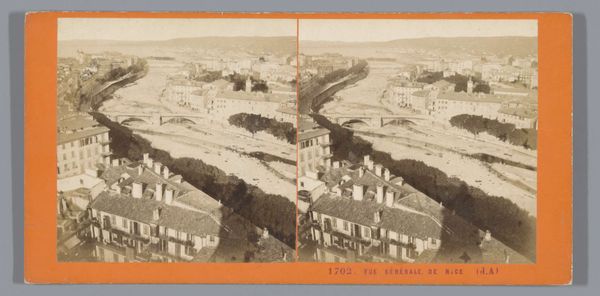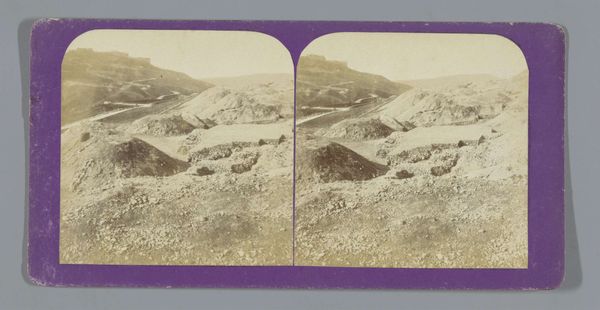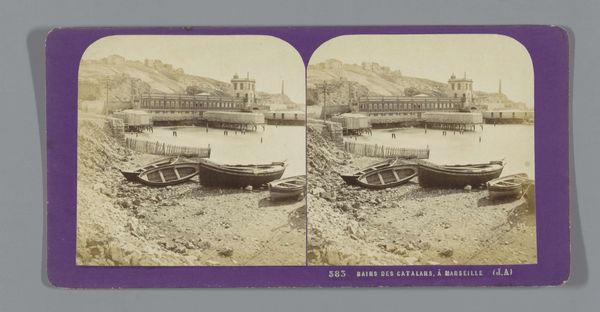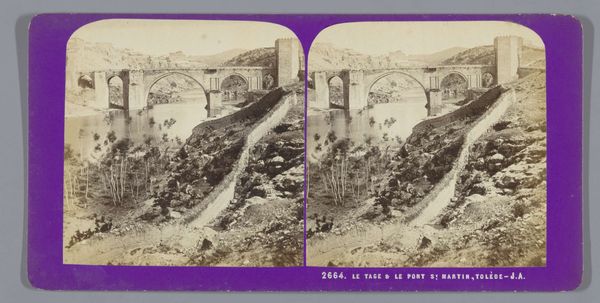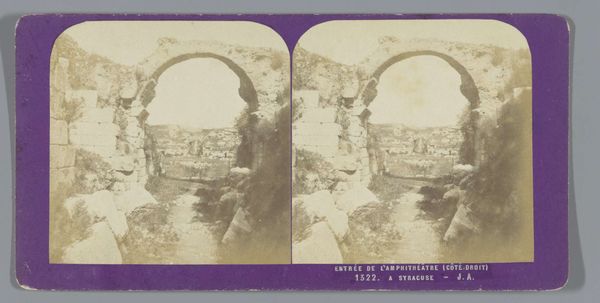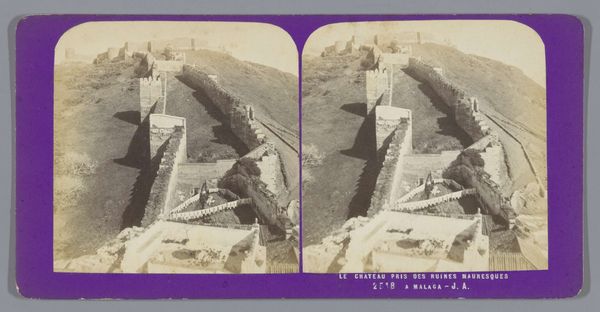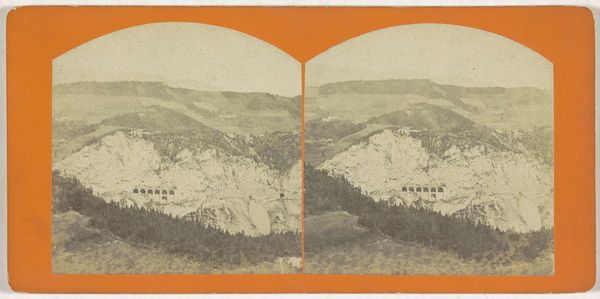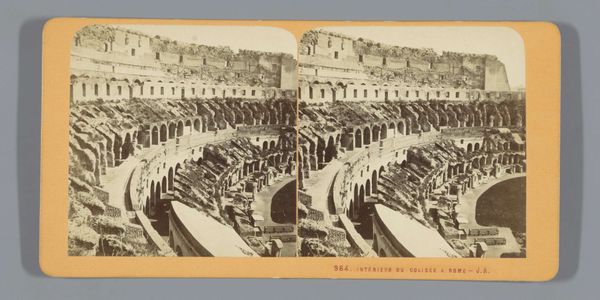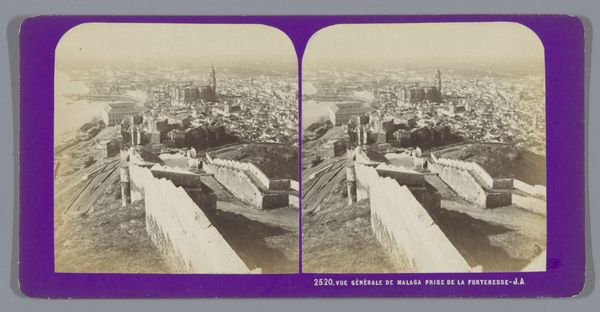
photography
#
landscape
#
photography
#
cityscape
#
realism
Dimensions: height 85 mm, width 170 mm
Copyright: Rijks Museum: Open Domain
Curator: Looking at this remarkable photograph by Jean Andrieu, titled "View of Barèges," taken between 1862 and 1876, the first thing I notice is how imposing the landscape seems to be on this little village. Editor: Yes, there's almost a sense of the sublime there, isn't there? How the sheer scale of nature dwarfs the human settlement. It brings to mind questions of access and power, of who could afford to journey to these spa towns, and who benefitted from them. Were these spaces accessible to all or primarily the wealthy elite seeking leisure and health? Curator: Precisely. Barèges was a famous spa town, so images like these were instrumental in constructing a visual narrative of leisure and health, promoting both the town and the presumed benefits of its thermal waters to a specific social class. It makes you consider, what stories were being excluded or obscured by these types of landscape portrayals? Editor: Indeed. Andrieu uses the relatively new medium of photography with all its implications, not only as a supposedly objective document but also as a carefully constructed representation. It seems intended to capture a picturesque moment for those outside and far from Barèges, creating and shaping an aesthetic experience of the landscape that further cemented its appeal to the elite. What do you make of its formal qualities? Curator: The aerial perspective is striking. The viewpoint looks down upon the town from above, almost as if suggesting dominion or control. Also, it speaks to this Realist style where artists, through media like photography, sought to portray scenes as faithfully as possible, devoid of romantic embellishments – albeit always from a certain viewpoint shaped by the prevailing social structures and powers. Editor: And that’s the beauty, isn’t it? That tension between the objective intent of realism and the inescapable subjective choices inherent in image-making. I think approaching art like this, by questioning not only what we see but also the unseen social, political, and economic structures that shape these representations, adds much more dimension to understanding the full meaning and lasting impact. Curator: Absolutely. By digging a bit deeper, questioning what the artwork implies, we reveal that art can be approached and experienced as evidence and as cultural construct that impacts communities to this very day.
Comments
No comments
Be the first to comment and join the conversation on the ultimate creative platform.
